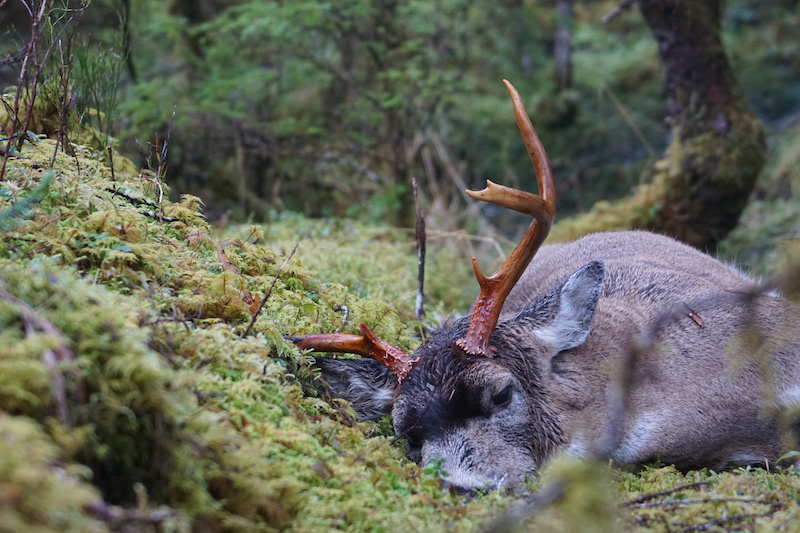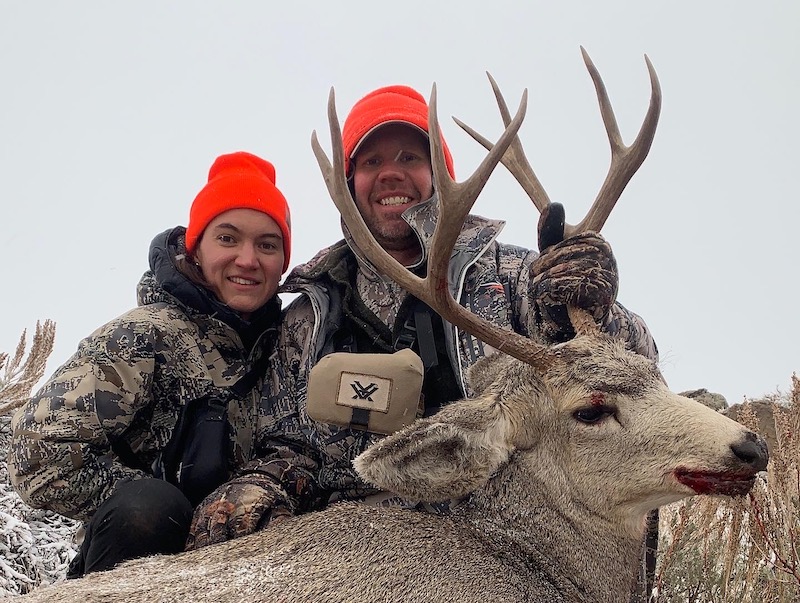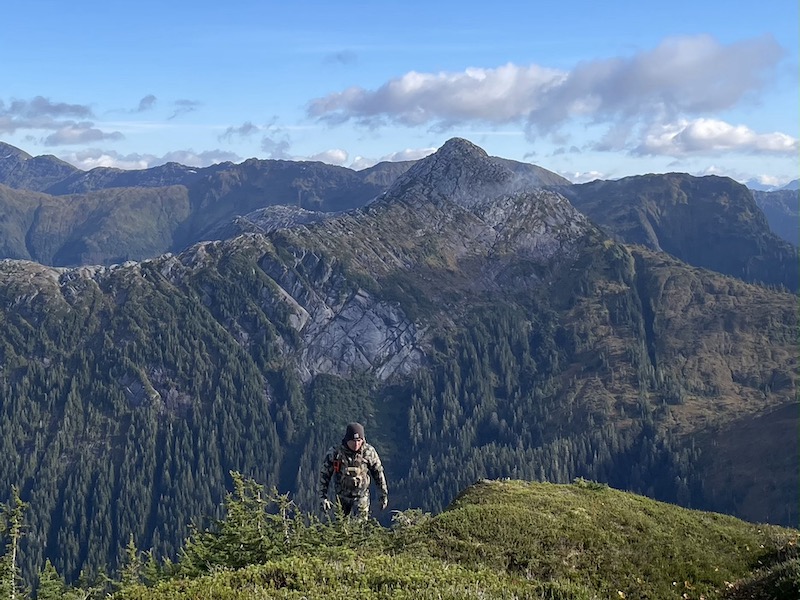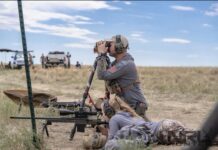One of the biggest things I want to know when I go hunting somewhere new is how long successful people take to move to their next option. In other words, at what point does it make more sense to move on rather than keep grinding it out? Because the distance from smart to stubborn isn’t far. So, should I expect to be on Plan C by day 3?
“It depends” is the expected response because it does.

As an Alaskan, we don’t really have the opportunity to move between plans on the same hunt. If you’ve flown out, you’re at that lake. If you’ve anchored your boat and hiked up a mountain, that’s your mountain. The only variables are within that hunting ecosystem. That doesn’t mean I always get my first choice of spots, and it doesn’t mean there isn’t pressure. Still, universal hunting fundamentals such as patience apply, as do an understanding of variables. In a way, limited options can be beneficial because it should necessitate a deeper focus on hunting Plan A the way it should be hunted rather than looking for excuses to move on.
Consider the variables
Weather
It’s not just about the right time or the right place. Variables such as weather play a critical role in this. My wife and I spent the 2020 Wyoming mule deer opener on a pocket of public land where we had seen a few masher bucks that summer. The weather was hot, and the only things moving were a few other orange vests. Right place. Wrong time. A few days later, the morning of a light snow, we returned, and both took our first-ever mule deer bucks. They weren’t the magnums we had seen during the summer, but after seeing nothing but other hunters on the opener, I was amazed to see nothing but deer appear out of the woodless prairie glazed in snow. Thanks to the weather, it was the right place and time. So, Plan A worked, but only after returning to it after Plan B and C failed. Given the realization that the key was the weather, maybe Plan B and C would have worked too.
Weather changes are key in Southeast Alaska too. Hot stretches in August tend to keep bucks moving only up until pre-dawn light. During the day, look for snow patches, but otherwise, be there when the inevitable storm breaks and the bucks are likely out. Later in the year, storms get more vicious, which isn’t necessarily a bad thing. The forecast for the Halloween weekend (one of my favorite Blacktail rut days) was 43 degrees and a 60 burger (60 mph winds) with four inches of rain. My wife and I didn’t welcome it, but it didn’t stop us. The rain and wind would cover our scent and noise, so my wife and I ran a two-mile circuit around some Plan A muskegs. Unfortunately, a guy parked right next to us and walked up the same one.

Population and Pressure
Population and hunter density impact this decision tremendously but can also lead to insanity. On an elk hunt in Wyoming last year (my wife had the tag, I’m saving points), the spot we had scouted during the summer was dead quiet. Not even a bugle at night. They were either gone or had gone quiet. There was sign, but we had no luck manifesting an encounter.
We gave Plan A two days, went to Plan B, then C, then returned to Plan A with the attitude that it was late season, the elk were pressured and quiet, and that was the reality. We ended up with two encounters. Neither ended in a killed bull, but soft cow calling had attracted a silent bull that may have come all the way in if we sat for another ten minutes. After about a half hour of sitting, we started our slow movement again with the wind in our favor and walked up on a frozen bull, partially hidden behind some brush. There was enough time to get nervous, but my wife wasn’t able to draw her bow, and the bull took off. Right place, right time only gets you so far. Next time I’ll book my tickets for two weeks earlier so the time will be even better. But that doesn’t guarantee anything.
Sitka Blacktail During The Rut
My Plans A through C are similar in that they all include slow-moving circuits of about a mile though they do vary in how I access them. Due to the inability to glass long distances, or even medium distances, in the muskegs of southern Southeast Alaska, hunting well is more important than covering miles. Sometimes it does take a few miles to get to the mile you want to hunt well, but in these cases the informed decision is made based on things like pressure – which may or may not be a good reason to forego one of the more accessible spots. It can feel like the bargain bucks are all dead, but just because the spot has been hit doesn’t mean it’s been hunted. Bucks survive. Even a few that live close to the road.
When I really deconstruct my Plan A, I discover that it’s not simply a location. It’s the method of hunting mixed with variables like weather and pressure. By focusing on how these variables impact the others, I can more effectively execute Plan A because there is a buck at my Plan A. The more I doubt that and start thinking about Plan B, the worse I will hunt Plan A. Before I can even think about moving, I have to be completely satisfied that I hunted it right.

Here are some thoughts from other hunters on moving from Plan A in their own words.
Sheep and Caribou
Tyler Freel – Fairbanks resident, host of Tundra Talk, writer for Outdoor life
For most trips, I (and most people) will have a general area in mind and will be limited to that area. Within that, I’ll usually pick an area to be my primary focus and try to get there first. For sheep, I’ll usually give a drainage or vantage point a couple of days, enough time to see sheep working through several feeding cycles. Even for moose or caribou, if you’re glassing, it takes a lot of patience just to see what’s literally in the open right in front of you. I would say it’s all situational, though. If I’m up caribou hunting for a day, I’ll try to cover country as much as possible, but with more time, it pays to give your plan more time to work. Usually, for sheep, we have one access plan and maybe a handful of areas we can reasonably look at on foot.
Sheep and Caribou
Harrison Gottschling – Lifelong Fairbanks resident
There have been many times when I have panicked and bombed out of an area. I need to maybe see something on the way out or be so focused on getting to my area, which might be 10 miles away, that I will walk past the quarry, and so over time, I have learned just to take it easy and look at where you’re going all the time.
But even for a very specific area for sheep, it might take me two days to get from my plan A within this very specific pocket of mountains to my Plan B, and so I have learned that I need to be patient and glass and make sure that I leave no stone unturned. Sheep hunting is high-stress and everything because they’re such status creatures when you kill one. But suppose it’s for something off the Steese Highway for caribou. In that case, I’ll have probably a dozen places where I will quickly move on from A to B to C to D, and I will make that determination very rapidly and try to not waste as much time so I can cover as much ground as possible.
Moose
Daniel Buitrago – Anchorage resident, Co-host of Alaska Wild Project
What’s a plan B? Once I choose the spot, it’s full send to that area for the entire hunt. I might push deeper into an area but have never packed up and changed locations. Only on a moose float hunt have we changed locations but only try to move once and split the trip in half. Obviously, kind of the same location as far as the area but just downstream, about 30-40 miles.
On an ATV moose hunt, we’ve always just stuck to the spot chosen because once you start calling, it could take some days for a bull to come in. We have, and do, split up to look at different openings but in the same general area. Setting up a moose camp with everything we bring takes a lot. So packing it up and choosing a different location was not an option. It seems like it’s meant to be that year in that spot, or it’s not.
Mountain Goat
Adam Smith – Skagway resident, Rocky Mountain Goat Alliance, Southeast Alaska Representative
If I’m going out for goat [in Alaska], I’ve done my scouting in the summer, and I’ve been keeping tabs on the animal I’m after. It’s not a spot for me. It’s animals. I will have a few specific animals in mind and target them. If I’m sheep hunting, I’ll have various drainages picked out and a systematic route in mind. I’m not afraid to vary from it, it’s never set in stone, but I always go into bigger country type hunts with literally days of map/Google earth/FATMAP scouting. Picking routes, vantage points, camp spots, and water. The whole 9 [yards].
I never try to worry about switching my plan. I always have something else in my back pocket. So if someone else is where I want to be, I automatically have something I can defer to. I wouldn’t say you could ever set a time limit on [Plan A]. Animals move so much that leaving an area you know holds animals is silly. I’ve sat and watched sheep do a lap around a mountain in under three days. If you sit still in a good spot you personally know holds animals, sometimes your odds are just as good, if not better, if you hunker down.
[When it comes to moving] I trust my gut. Most of my moves/decision-making is based on the weather more than anything. Make hay when the sun is shining.
Lower 48 vs. Alaska
Adam Krick – Former Metlakatla, Alaska, resident, big game guide in Colorado
I usually have at least 3 spots in mind before I start a hunt for the day, these range from as broad as a drainage to as specific as a trail intersection. You always want to have options thought out ahead of time so you can make fast decisions and be hunting key areas for a longer time.
The biggest factor in moving to Plan B is other hunters, which unfortunately can be common during certain seasons in the Lower 48. If there are other people in the area I immediately move, animals are usually not doing their natural thing if humans are around. Other factors in moving would be little sign or game in the area, weather/wind or time. My abandonment of Plan A hinges a lot on my gut feeling of an area. Hunting is very instinctual and humans have been doing it for hundreds of thousands of years so leaning on my genetic code usually wins out on when to change plans. I don’t have a set time/days to hunt an area before moving on.
Comment on this article or ask Jeff questions here.
More Rokslide tips and tactics.


















